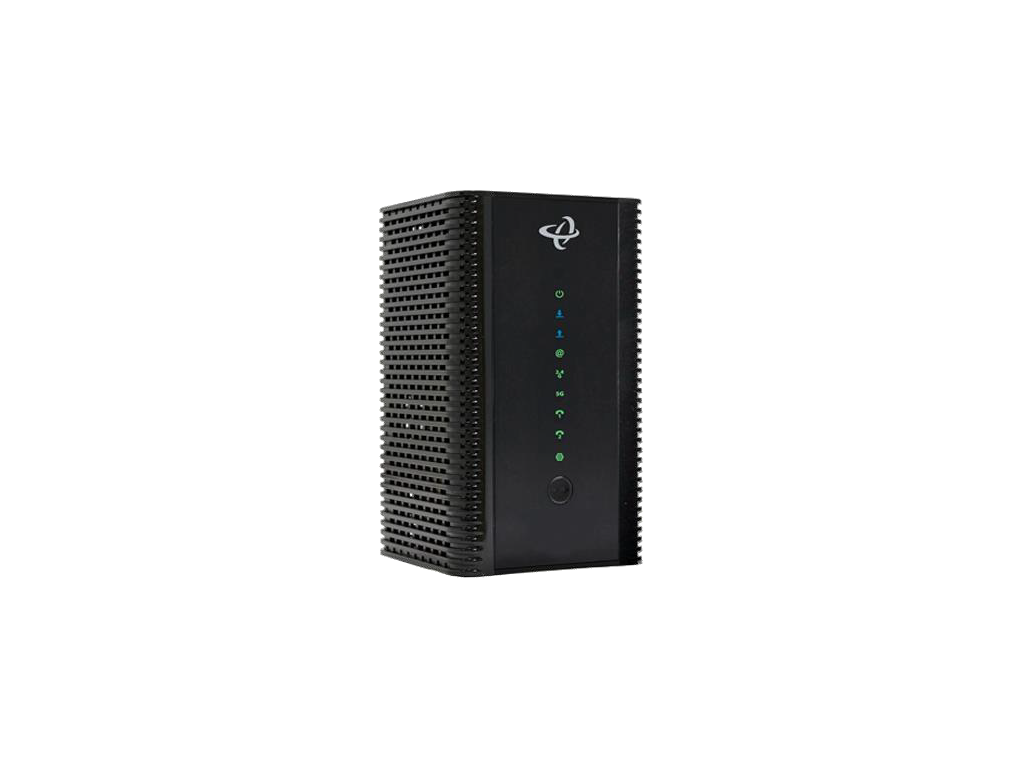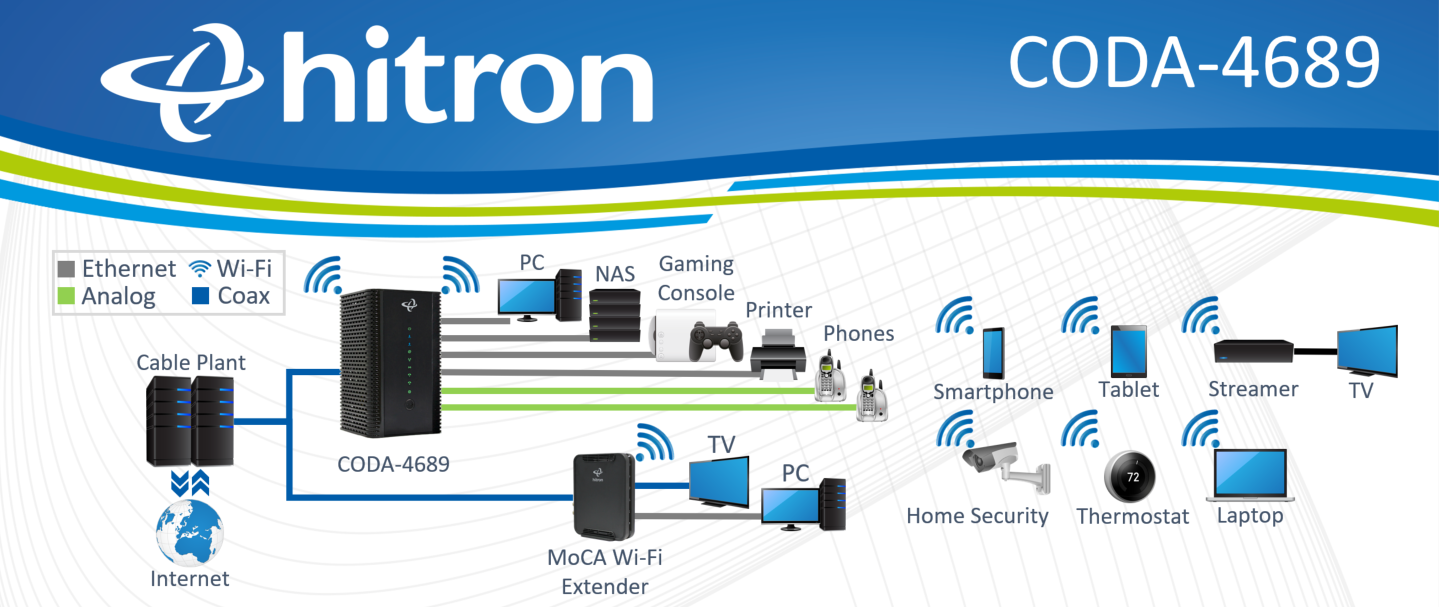Multi-Gigabit DOCSIS 3.1
The CODA-4689 can receive 5 Gbps bidirectional based on 2xOFDM + 32 QAM over its DOCSIS 3.1 interface. This powerful gateway is an ideal solution for your higher tier multi-Gigabit service plans
Ready for 85MHz Returns
With a software switchable 5-42MHz / 5-85MHz return path, the CODA-4689 can seamlessly support tomorrow’s migration to a mid-split (5-85MHz) return path, enabling you to cost-effectively upgrade customers to higher-tier upstream speeds at any time.
Blazing Fast 802.11ac Wave 2
DOCSIS 3.1 deployments require a high-performance home network. The CODA-4689 is built to give your customers the wireless speeds and coverage they need. It supports 4×4 5 GHz 802.11ac Wave 2 dual-band concurrent MU-MIMO and 3×3 2.4 GHz 802.11n access point for enhanced coverage, fast speeds and rock solid reliability.
Compatible with DOCSIS 3.0
The CODA-4689 supports DOCSIS 3.0 32 bonded downstream and 8 bonded upstream channels. That means you can deploy it today on your current DOCSIS 3.0 networks; you won’t need to swap out customer hardware when you upgrade to DOCSIS 3.1.
Better WiFi with Bonded MoCA 2.0
Integrated bonded MoCA 2.0 delivers a near-Gigabit wired backbone over the home’s coax wiring, enabling homeowners to get a strong reliable network in every corner of the home. Hitron’s AutoSync software seamlessly pairs the gateway with a MoCA extender.
Integrated Telephony Support
With two integrated HD telephone ports, you can meet all your subscriber’s connectivity needs.
Easy to Set Up and Manage
The CODA-4689 is designed for ease of use. A built-in TFTP client obtains the IP address and configuration data from the network server automatically, so a few simple connections are all that’s needed to get it up and running. WiFi security is pre-configured and pre-enabled thanks to WiFi Protected Setup (WPS). And providers get complete remote control and management via SNMP, TR-069 and HNAP.
Key Specifications
- DOCSIS 3.1 compliant
- DOCSIS 3.1 2×2 multi-carrier OFDM
- DOCSIS 3.0 32×8 channel bonding
- Switchable 5-42/5-85MHz Upstream
- Wi-Fi 3×3 2.4 GHz 802.11n and 4×4 5 GHz 802.11ac Wave 2 dual band MU-MIMO
- MoCA 2.0 Channel Bonding for highest performance
- One USB 3.0 host, supporting Network Attached Storage (NAS) functionality
- Integrated DLNA Media Server with support for video, audio and image serving
- 2 HD voice ports with SIP or MGCP support
- Battery backup (BBU
- Extensive operator control via configuration file and SNMP
- TR-069 and HNAP for easy setup and remote management
Learn More about Cable Modems & Routers
WPS on Router: What It Is and Why It Might Not Be Safe
What Is WPS on a Router? WPS (WiFi Protected Setup) is a feature that helps devices connect to a WiFi network without entering a password. It’s often found as a button on the back or side of routers. When you press it, the router enters a short 1–2 minute window where...
When Should I Reset vs Restart my Cable Modem?
When you should do a cable modem restart or reset depends on the situation. It’s extremely important to understand these terms as the function of these terms have different meanings. In simple terms, to restart or reboot your modem means to turn off your modem and...
What is WiFi 6 and Is WiFi 6 Really Better?
WiFi 6 (also known as 802.11ax) is the most recent version of WiFi. It’s the best version of WiFi to date, with more support, faster speeds, less network congestion, better security, improved battery life for devices, and more. If you are looking for the latest and...
How do I set up my cable modem?
There are differences in setting up your cable modem whether you purchased or rented the device. If you bought your own cable modem, you should check the user manual or manufacturers' support website for specific details. For example, Xfinity (Comcast) and other Cable...
Can I use any cable modem for Cable Internet?
The right cable modem or cable modem router combo to use to get cable Internet in your home depends on a few things: Whether you are renting vs buying Certification and compatibility with your Service Provider Must-have features to consider For example, if your...

